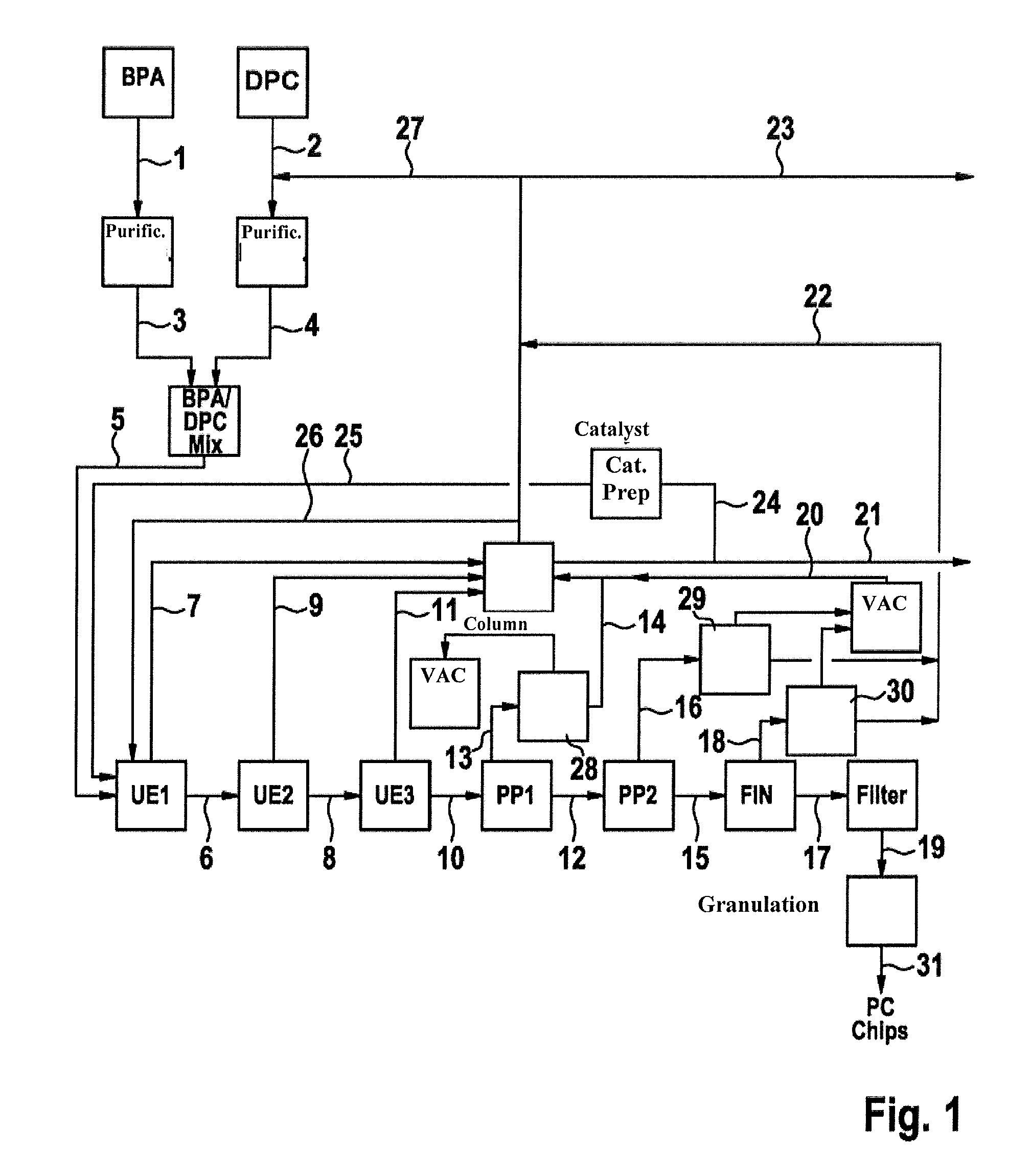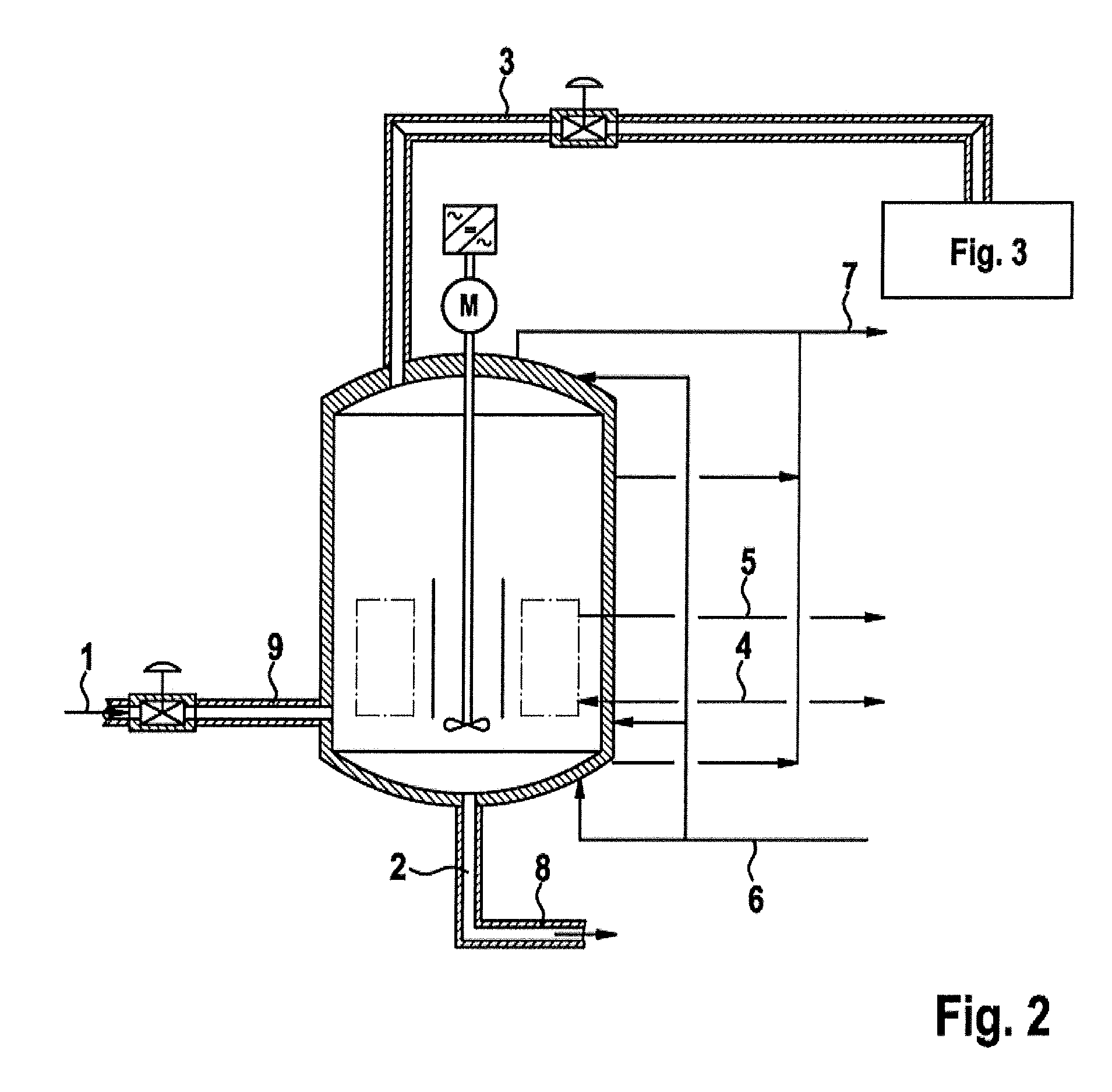Method and plant for producing polycarbonate
a technology of polycarbonate and plant, which is applied in the direction of chemistry apparatus and processes, chemical/physical/physical/physical-chemical stationary reactors, chemical/physical/physical-chemical processes, etc., can solve the problems of manual intervention, inability to use further, and inability to use phenol to produce new diaryl carbonate to be used in the process
- Summary
- Abstract
- Description
- Claims
- Application Information
AI Technical Summary
Benefits of technology
Problems solved by technology
Method used
Image
Examples
Embodiment Construction
[0068]The apparatus according to the invention for the production of a polycarbonate has at least the following components:[0069]a) at least one transesterification reactor for the purpose of receiving a reaction mixture which includes at least one bisphenol and at least one diaryl carbonate, and for the purpose of producing a transesterified intermediate product,[0070]b) at least one pre-polycondensation reactor for the purpose of producing a pre-polycondensation intermediate product from the transesterified intermediate product,[0071]c) at least one polycondensation reactor (finisher) for the purpose of producing a polycarbonate from the pre-polycondensation intermediate product,
wherein the at least one transesterification reactor has means for the removal of the hydroxyl-aryl reaction product cleaved during the transesterification reaction, said means having at least one column.
[0072]Preferred embodiments of the apparatus according to the invention are given in claims 11 to 19.
[0...
PUM
| Property | Measurement | Unit |
|---|---|---|
| temperature | aaaaa | aaaaa |
| temperature | aaaaa | aaaaa |
| pressure | aaaaa | aaaaa |
Abstract
Description
Claims
Application Information
 Login to View More
Login to View More - R&D
- Intellectual Property
- Life Sciences
- Materials
- Tech Scout
- Unparalleled Data Quality
- Higher Quality Content
- 60% Fewer Hallucinations
Browse by: Latest US Patents, China's latest patents, Technical Efficacy Thesaurus, Application Domain, Technology Topic, Popular Technical Reports.
© 2025 PatSnap. All rights reserved.Legal|Privacy policy|Modern Slavery Act Transparency Statement|Sitemap|About US| Contact US: help@patsnap.com



